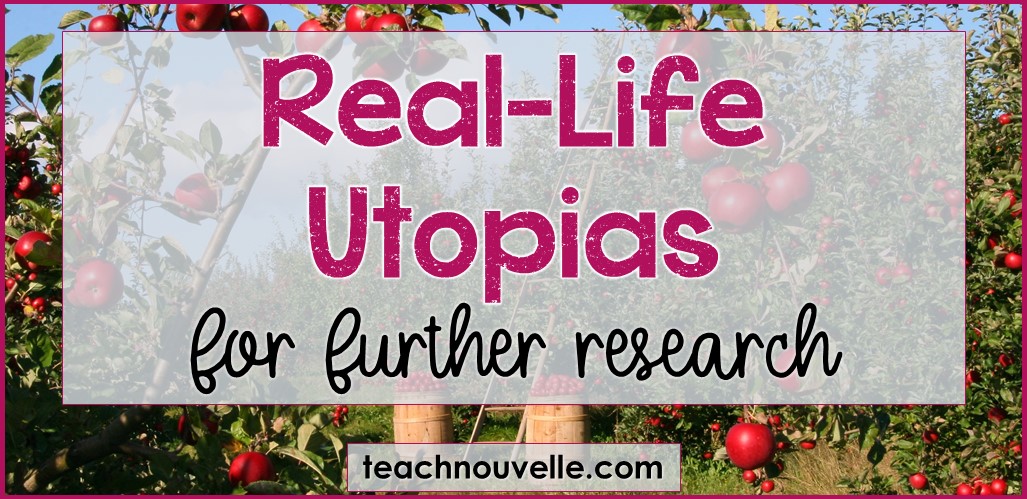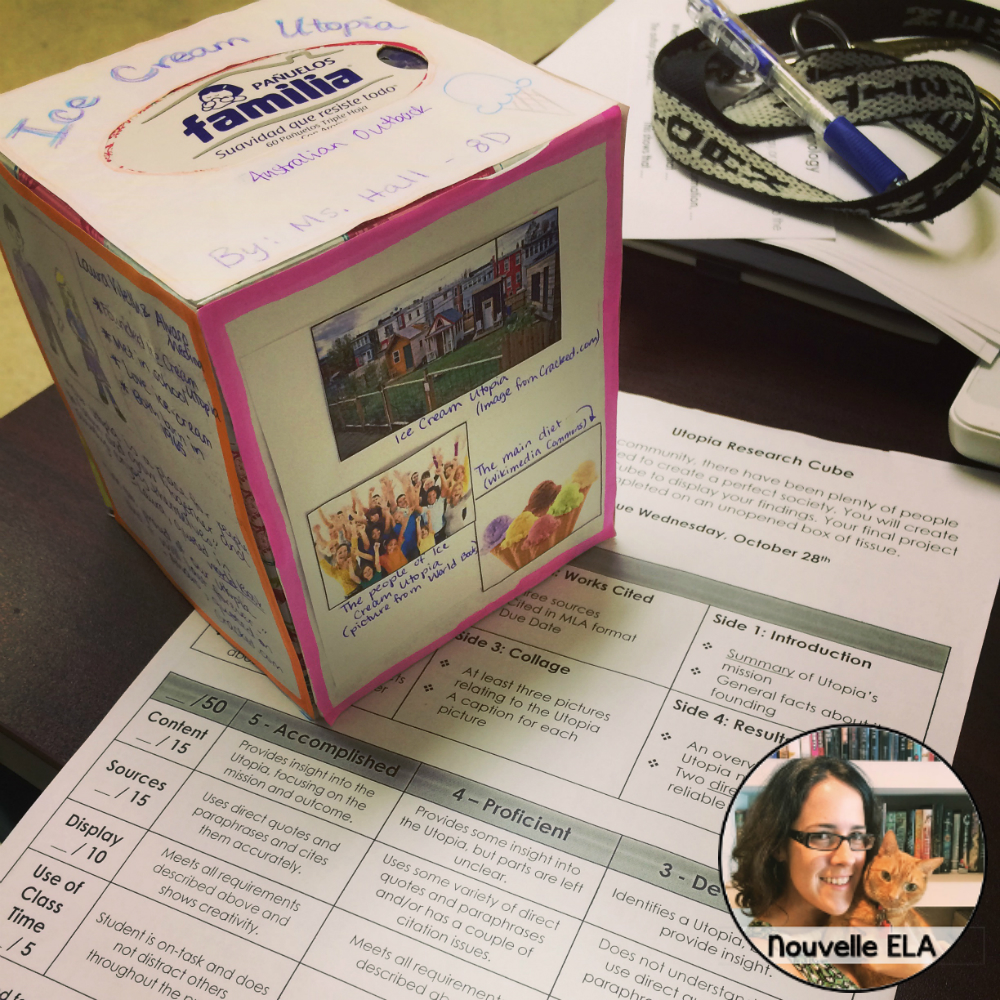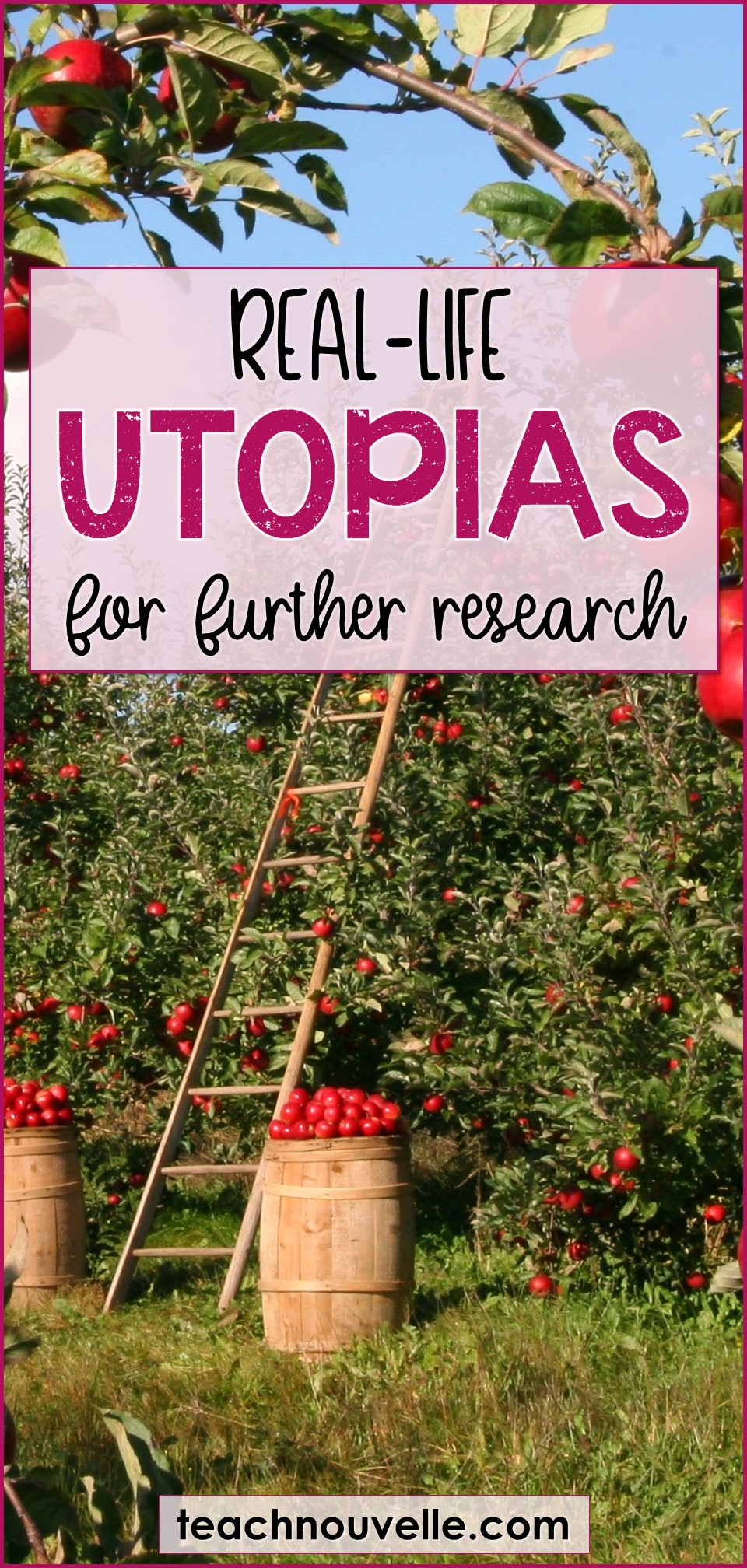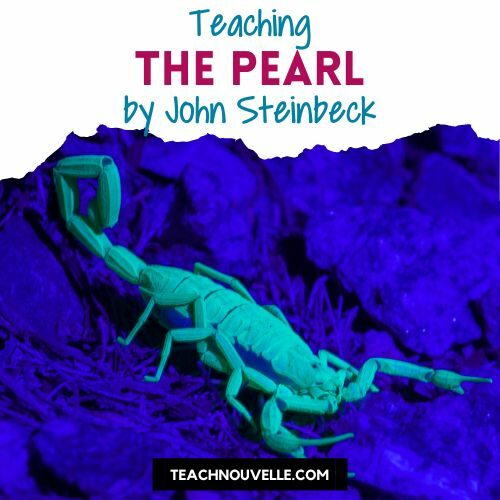Teaching The Giver. The Hunger Games. Matched. Unwind. Feed. Teaching dystopian literature can be a great way to expose students to types of government and societal control. Dystopian novels often begin with something that seems like a utopia, though. Everything seems great before the protagonist sees the strings that control the system. In The Giver, utopian society seems great until Jonas realizes what’s being kept from the community and at what cost. Feed seems like technology for everyone until we meet a character who doesn’t have access. The Hunger Games is obviously terrible right off the bat, so this isn’t a hard-and-fast rule, but to have dystopian, you must first consider what utopian looks like.
When my 8th graders read The Giver, utopian society becomes an excellent research topic for secondary ELA students to research some real-life utopias. We talk about the concept of utopias. Then, we start brainstorming what these communities might look like for each of them – what kind of freedoms they’d want to have. What would the ideological goals of their community be? And of course, we look at utopias that have risen and fallen over the course of American history when teaching The Giver and real-life Utopias. Here’s a shortlist of some of my students’ favorites.
When you let your students research utopias when teaching The Giver, Utopian societies and all the problems that come with it will make you want to keep content in mind. Some of these utopias had sexually liberal philosophies that your students could encounter in research. Others had polygamist ideals or even ventured into abusive situations like child marriage. The list below avoids all of these problems, BUT I just want you to be aware in case you let your students run free in their research.
7 Real-Life Utopias for Secondary ELA to Research when Teaching The Giver, Utopian Society:
Brook Farm (1841-1847)
George and Sophia Ripley founded their real-life utopia, Brook Farm, in West Roxbury, MA. It is pretty much what students would come up with if given the ability to imagine a utopia: “everyone does a job they prefer, and everyone shares the profit.” One of the ideas that students will confront in further research of this utopia, however, is that of financial security. If everyone is getting the same profit, there must be a leader who is responsible enough to first set some money aside in a rainy-day fund. Sadly, Brook Farm eventually went bankrupt. A fire destroyed one of its buildings and they had no money set aside to rebuild.
Arden, Delaware (1900-present)
Sculptor Frank Stephens and architect Will Price founded Arden as a place of intellectual and artistic freedom. This is a great example of a utopia that’s “still going”. In their research, students will be able to get modern information as to what makes it work. Arden is a village and art colony based on the voluntary contributions of workers. The founding ideals followed the communist philosophies of Peter Kropotkin, and Stephens and Price wanted the village to be void of a central government. Older students could compare this utopia to the (failed) communism instituted in the Soviet Union.
Fruitlands (1843-1844)
Amos Bronson Alcott and Charles Lane founded their real-life utopia, Fruitlands. Fruitlands is interesting to students because it was a short-lived farming utopia that was strictly vegan AND didn’t use animal labor. In their research, students will also learn about the Transcendental values that governed the community. Since I introduce utopias to 8th graders, this is often their very first interaction with transcendentalism!
Octagon City (1856-1857)
Octagon City was another failed agricultural utopian community with a principle of a vegetarian life. Located near Humboldt, Kansas, the town quickly failed when settlers were simply unprepared for the lifestyle. Researching this settlement is a great opportunity for students to imagine what a utopia would need to get “up and running” – it’s not enough to just strike out on your own without a plan.
Hopedale Community (1842-1868)
Abolitionist Adin Ballou founded Hopedale in Worcester County, Massachusetts. Ballou promoted pacifism and socialism, and called his philosophy “practical Christianity.” One of the biggest differences between Hopedale and other utopian experiments is that Ballou never advocated for complete isolation. Even though members lived in the community, they could come and go as they pleased. The community also made advances in gender equality, though it still largely relegated women to domestic roles.
Arcosanti (1970-present)
Architect Paolo Soleri founded Arcosanti in Arizona and hoped to balance architecture and ecology. Residents call Arcosanti a utopian eco-city and still has between 50 and 100 residents. The community is still incomplete, though. It can house 5000 citizens, but never moved beyond a prototype phase in sustainable living. This is another cool research opportunity since Arcosanti isn’t isolated. Many people have been able to visit, interview residents, and photograph the amazing structures.
North American Phalanx (1841-1856)
Settlers built North American Phalanx in Colts Neck Township, in Monmouth County, New Jersey. Based on the philosophy of Charles Fourier, this settlement promoted ideals of communal living rather than private homes. The interesting aspect of this settlement for students is the dissolution of the community. They had a number of disputes over women’s rights and suffered losses from two fires.
If you want a quick research project for your students, check out this Research Cube and try having them research topics like The Giver Utopian society! If you’re looking for something for teaching The Giver and other Utopias more in-depth, I also have a Real-Life Utopias Portfolio Project.
When teaching The Giver, utopian society becomes an excellent opportunity for secondary ELA student to research some real-life utopias. However, if you want to go in the opposite direction, I checkout this post on teaching dystopian literature.
This post focuses solely on utopian concepts, but I have another post with even MORE ideas for teaching The Giver 🙂
What other topics do you use to enrich your lessons when teaching The Giver? Comment below so we can all learn!








2 Comments
Heather Hilliard
March 8, 2019 at 10:28 amThis is awesome! Do you have sources that you have found that have been helpful for your students?
Danielle Hall
March 8, 2019 at 11:01 amHi, Heather! My students really like seeing ideas for “smart cities”, even if they never came to fruition, so here is a source I share: https://io9.gizmodo.com/10-failed-utopian-cities-that-influenced-the-future-1511695279.
This article is a great overview of a bunch of different utopias, but it does explicitly acknowledge the role that sexuality (and sometimes, underage marriage) played in various utopias. Up to you whether you want to include that: https://www.pcmag.com/feature/338063/11-failed-utopias-you-can-visit/2 … the appeal of this article is that evidence of these places still exists, so we can look up what the places look like today. 🙂
Best,
-Danielle